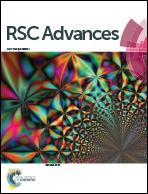Purification, characterization, synthesis, in vivo and in vitro antihypertensive activity of bioactive peptides derived from coconut (Cocos nucifera L.) cake globulin hydrolysates
Abstract
Coconut cake globulin hydrolysates (CCGH) with high ACE inhibitory activity (52.16%) were obtained by the sequential digestion of alcalase, flavourzyme, pepsin and trypsin assisted by high pressure pretreatment. It was found that systolic blood pressure of spontaneously hypertensive rats was reduced markedly (P < 0.05) after single and chronic oral administration of CCGH. CCGH were separated by ultrafiltration, Sephadex G-15 gel chromatography and RP-HPLC. Finally, two peptides Pro–Gln–Phe–Tyr–Trp (739.84 Da) and Val–Val–Leu–Tyr–Arg (648.81 Da) were identified. Their IC50 (the concentration of peptide that is required to inhibit 50% of ACE activity) were 0.104 ± 0.012 and 0.244 ± 0.026 mg mL−1. The two peptides exhibited potent non-competitive ACE inhibition and relatively good stability against gastrointestinal enzyme digestion. Furthermore, the two peptides could significantly lower the endothelin-1 content, and protect vascular endothelial cells from reactive oxygen species mediated damage. The results showed that coconut cake globulin could be effectively bioconverted to produce bioactive peptides, which could be used as a functional food ingredient to control ACE activity.


 Please wait while we load your content...
Please wait while we load your content...